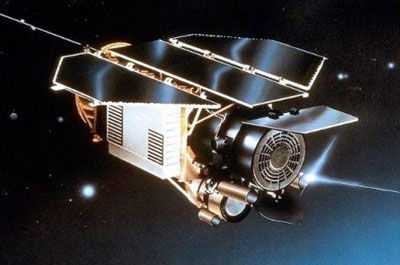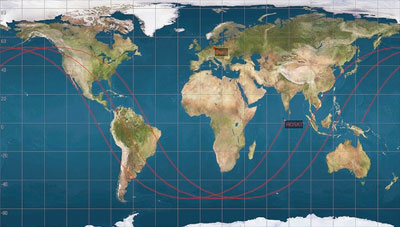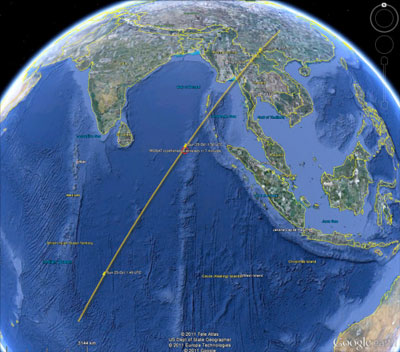ROSAT re-entryThe launch of the ROentgen SATellite (ROSAT) into space on 1 June 1990 marked the start of a mission that would allow researchers to perform an all-sky survey of X-ray sources with an imaging telescope for the first time. X-rays arise in the Universe in response to unusually hot, high-energy processes, which often entail extreme states of matter such as black holes or neutron stars.

During its mission, the ROSAT performed its observations in an elliptical orbit at distances of between 585 and 565 kilometres above the surface of the Earth. Since its decommissioning, atmospheric drag has caused the satellite to lose altitude.
In June 2011, it was at a distance of only about 327 kilometers above the ground. Due to the fact that ROSAT does not have a propulsion system on board, it was not possible to maneuver the satellite to perform a controlled re-entry at the end of its mission in 1999.
When the spacecraft re-enters the atmosphere at a speed of approximately 28,000 kilometers per hour, the X-ray observatory will break up into fragments, some of which will burn up by the extreme heat.
The latest studies reveal that it is possible that up to 30 individual pieces weighing a total of 1.7 tons may reach the surface of the Earth. The largest single fragment will probably be the telescope's mirror, which is very heat resistant and may weigh up to 1.7 tons.
The time and location of re-entry cannot be predicted precisely. At present, scientists expect the X-ray satellite, which completes an orbit around Earth in about 90 minutes, to re-enter around between 22 and 23 October 2011 UTC (latest updates here).
Currently, the re-entry date can only be calculated to within plus/minus one day. This time slot of uncertainty will be reduced as the date of re-entry approaches.
However, even one day before re-entry, the estimate will only be accurate to within plus/minus five hours. All areas under the orbit of ROSAT, which extends to 53 degrees northern and southern latitude could be affected by its re-entry. The bulk of the debris will impact near the ground track of the satellite. However, isolated fragments could fall to Earth in a 80 kilometer wide path along the track.

The primary causes of uncertainty in the estimation of a date of the re-entry date are the fluctuations in solar activity. Solar radiation heats up the Earth's atmosphere and therefore increases the atmospheric drag. Short-term fluctuations in solar activity are governed by an 11 year activity cycle. At present, we are approaching the next maximum, which has turned out to be much lower than expected.
During the re-entry phase of the satellite, German scientists will be evaluating data from the US Space Surveillance Network (SSN). In addition, the Tracking and Imaging Radar (TIRA), the large radar facility at the Fraunhofer Institute for High-Frequency Physics and Radar Techniques in Wachtberg near Bonn will be monitoring the descent of the X-ray satellite to further improve calculations of its trajectory.
Experts will be analysing the data obtained on behalf of the German Aerospace Center (DLR) to predict the moment of re-entry as accurately as possible.
Last update: 21 October 2011, 20:42 UTC (21:42 CEST)
Re-entry of ROSAT currently expected between 22 October 2011, 18:00 UTC (20:00 CEST) and 23 October 2011, 12:00 UTC (14:00 CEST).














